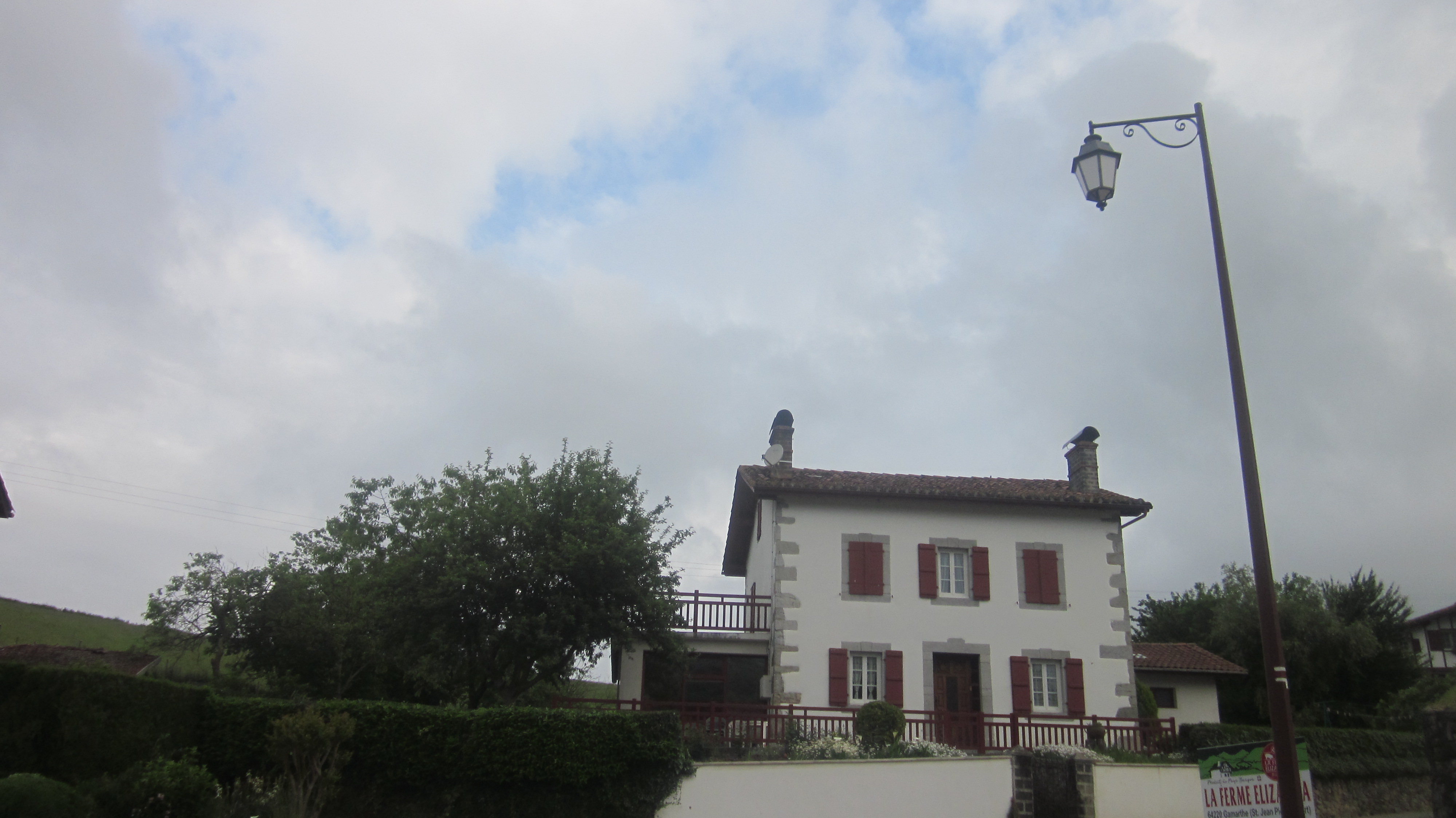Back to the good old days – breakfast not included so we caught the sun by surprise even though s/he would have been shrouded anyway. The landscape is starting to change as is the human contribution. The hills are becoming steeper – not the ones we are climbing, and also less productively useful. They are often bare without the usual hilltop trees with sheep hanging to the hillsides like goats, where possible. Behind the hills are the imposing Pyrenees mountain range as it keeps us in its mighty shadow while it’s just as imposing inhabitants circle gracefully above. They are one of Europe’s largest and rarest vulture, the lammergeier or bearded vulture with a wingspan of up to 3 metres, and is one of the few vultures without a bald head.
As we take in the final French landscape scenery in the French Basque region, the large rectangular red and white regional houses colour the countryside. They are kept in fastidious order with the original ones still maintaining the owner’s name above the entrance. In each town in the centre of these houses is a large concrete wall used to play handball – it does nothing for the aesthetics but a lot I imagine for the athletics….sorry. In the Basque region, this pelota court is still at the center of the social life of each town and city.
French signs now become unpronounceably Basque as unlike other languages makes use of letters that they ignore such as X’s and Z’s. The sound of the words seem to echo a language long forgotten by others, reminding us of our Swiss friend’s northern Swiss language – Romanesque.
We wind our way along the U-shaped valleys, into the cold hills, towards dark clouds that do nothing but threaten to open up. We stopped at a house (a few of these are slowly appearing to make up for the village’s scarcity of shops) that had instant hot drinks and things to munch on, and you pay what you want. After no breakfast this was perfect, and the bonus – a non vicious beautiful white dog that looked a little like a Japanese Kishu.
Through many more red and white villages, mostly breeding hardy sheep and cattle, between gates, over ramps and into the valley at the foot of the pass, and then down the steep cobblestoned street of St Jean Pied de Port – ‘foot of the pass’ in Pyrenean French.
We left early to get to the markets but the markets never got out of bed. So we had our third and final look at this stunning old city and then an afternoon stroll up the steepest 4 kilometre of the whole journey – the beginning of the Pyrenees climb where we found a bed at our last French lodging – Hounto. Our bedroom looks out over the vast valleys, unlike last year when the fog prevented us from seeing anything but the track ahead. Tomorrow, it’s off to Roncesvalles where our French friends will struggle with their Spanish and Corrie will no longer have to struggle with her French.









Well done Will & Corrie! Another great achievement.
Congratulations Will & Corrie, It only seems like yesterday since you left. Enjoy the rest of your travels. Love Annie
Bravo for this mighty achievement. Completely outstanding!
Wow, you seem to have got there in no time at all, I can ‘t believe it’s a month since you started out, but then I read back over your journey, & so many experiences,some of the most beautiful towns & villages & superb photos, what a trip. Congratulations & love from both of us. Pete & Li